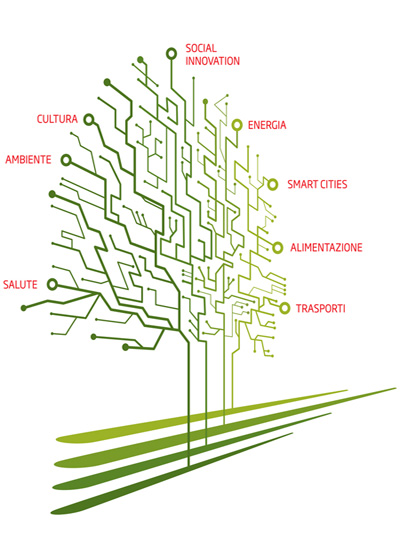
The Calabria Region is characterized by a very high seismicity. In fact the Calabria-Peloritani Arc (CPA) represents one of the most active seismo-tectonic areas in the Mediterranean area, which shows evidences of two main phenomena: (i) the subduction of the Ionian Sea lithosphere beneath the ACP; (ii) the expansion of the Tyrrhenian Sea accompanying the counter-clockwise rotation of the Italian peninsula and the eastward migration of the ACP. In particular large earthquakes are originated in the Messina Straits. The CPA area was struck in the past centuries by numerous destructive and catastrophic seismic events. The most recent earthquakes occurred in 1783 when a seismic sequence damaged strongly Southern Calabria and also North-eastern Sicily therefore is possible that future events may cause severe damages to the large patrimony of public cultural monuments. This implied severe consequence for human lives and the whole patrimony of cultural and historic heritages. Within such a framework, the MASSIMO project proposes to study and monitor the seismic response of the different building construction typologies (e.g. masonry, reinforced concrete and composite structures) by considering surface geology, topographic features and elastic properties of soils where such structures are located. The main goal of MASSIMO is to evaluate quantitatively the earthquake effects on specific sites, which have been selected through a close interaction with local Administrations.
The project proposes an infrastructural system, developed and tested for the non-invasive monitoring of architectures (or infrastructures) within a seismic area. It provides a modular, exportable and scalable methodology based on the multi-spatial and multi-temporal integration of data from remote sensing, geophysical and in situ measurement surveys. On the one hand, the proposed approach allows investigating both environmental phenomena and built-up areas from regional (up to hundreds of squared km) to urban (lower than tens squared km) spatial scales, at long- (annual) and short-term (monthly) domains. On the other hand, it provides the monitoring of critical infrastructures and cultural heritages (namely, the building spatial scale) at near real time, real time, off-line and time continuous temporal scales.
In detail: a) a regional-scale analysis of the seismic environment (from hundreds to tens km) is provided to monitor long-term (annual scale) surface and sub-surface phenomena that may impact on selected urban areas and buildings. To this purpose, the analysis of seismogenic sources is combined with airborne magnetic surveys, space-borne Synthetic Aperture Radar (SAR) and hyperspectral Optical sensors, to describe the regional seismic activity together with the sub-surface fault systems, surface deformation processes and land use mapping of the area, respectively; b) a local-scale analysis of the urban landscape (from tens squared km to hundred squared m scale) is provided to monitor and assess short-term (monthly scale) processes and phenomena, which may impact on selected historic structures. To this purpose, geological and geotechnical surveys of the area are integrated with airborne Light Detection And Ranging (LiDAR) analysis to describe the site seismic response, the surface geology, the topographic profile and the built-up area structural features; c) a building-scale analysis of monitored historic buildings is concerned to provide a real-time, near-real-time, off-line and time continuous monitoring about the conservation status of building. To this purpose, the analysis of geometric, structural, material and vibrating building properties is provided through proximal remotely sensing tools (i.e. terrestrial laser scanning, infrared thermal cameras, real aperture radar) and ambient vibration test.
This methodology has been accompanied by the implementation of an instrumental monitoring system, which consists of the following elements:
• Storage or repository: it represents the simplest way to save metadata associated to geo-spatial and multi-temporal results, properly selected through a queryable inventory;
• Relational Database Management System (RDBMS): it is the most effective configuration to organize and manage geospatial data through logical, indexing and querying operations;
• Geo-database: it refers to the database of geographical data coming from multi-disciplinary investigations. It allows: (i) saving huge amount of data in the storage as geo-referenced spatial layers; (ii) implementing relational queries and models; (iii) ensuring the integration of data with non-geospatial results; (iv) providing the multi-spatial and multi-temporal management of data with basic, advanced and user-defined functions;
• Sensor area network: it is implemented for the real-time, near-real-time, temporary and time-continuous monitoring of structures at building-survey scale. It includes seismic stations, which are deployed within relevant buildings for their static and dynamic monitoring. All the acquired data are transmitted and stored to the centralized server through wired or wireless technologies. Moreover, the network is managed through dedicated modules for both real-time acquisitions and the recovery of seismic records.
Results coming from multi-sensors investigations are integrated, combined and assimilated through ad-hoc user-friendly interfaces, which can be considered the value-added products of the whole project. The latter allow to access, manage, display, integrate and assimilate multi-disciplinary results. In particular, four value-added products have been provided, i.e. a web-based Geographic Information System (GIS), a 3-dimensional (3D) visual platform, a seismic bulletin and census sheet of monitored structures to be used for static / dynamic monitoring and diagnostic purposes.
The results can be used to provide guidelines for local and national Institutions about possible consolidation / restoration / prevention planning, as well as the real-time and remote monitoring of historical buildings for safeguarding purposes. The MASSIMO project has been organized in different activities which started from the analysis about the state of the art on the Calabria Region, including the analysis of existent catalogues at National and Local level. This analysis allowed to identify some relevant architectural structures in three main areas: Cosenza, Vibo Valentia and Reggio Calabria Province. In detail, the choice of selected test sites, which have included different construction typologies (i.e. masonry, reinforce concrete and composite structures) has been considered as representative of the complex geographical-geophysical and historical-architectural situation of the whole Calabria region.